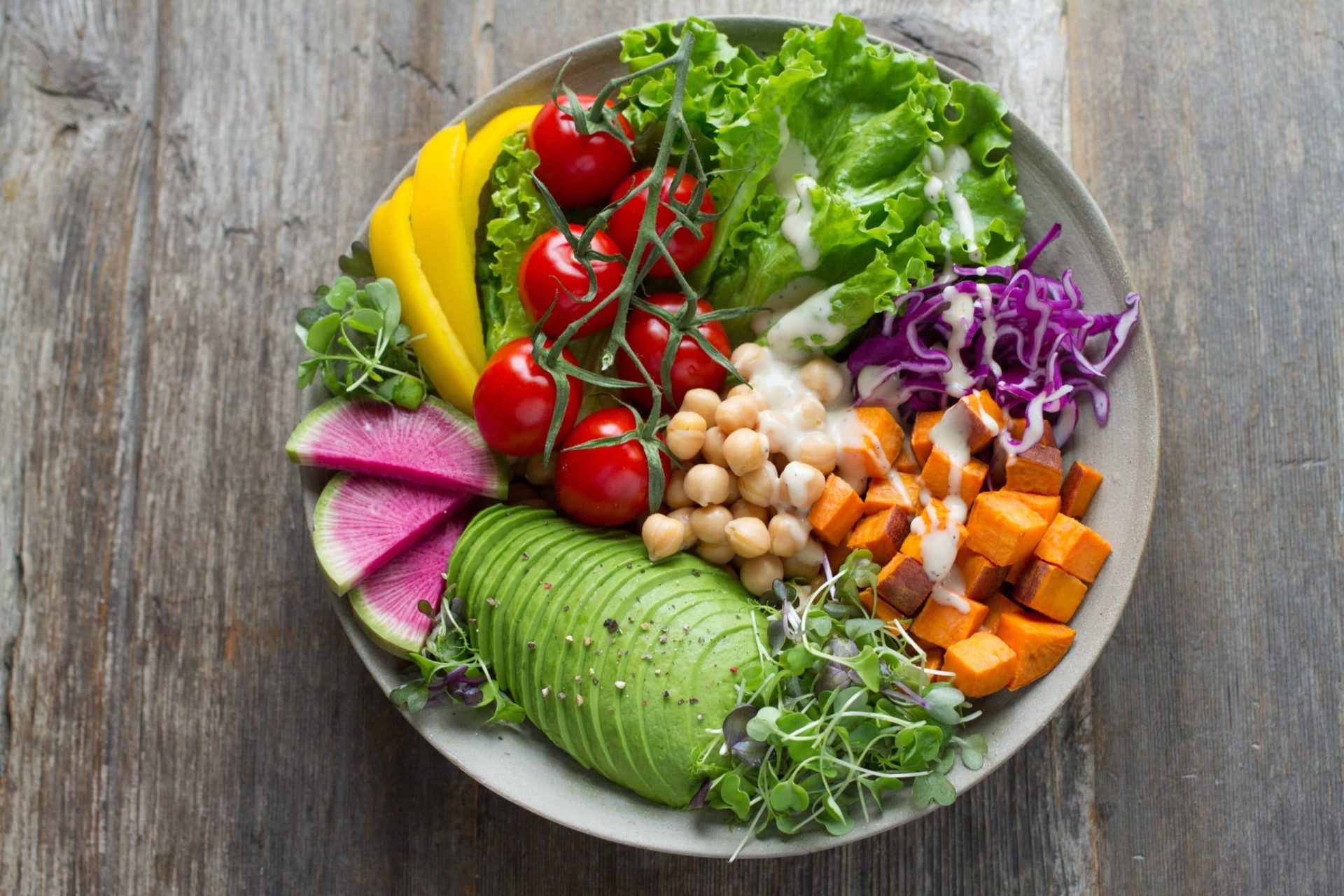
Eating Healthy: Did You Taste The Rainbow Today?
“Taste the rainbow,” is a well-known tagline made famous by the multicolored candy, Skittles. But there’s a price to pay to taste this artificial rainbow, and the many other artificial food-like substances dominating our western diet. According to an article by Everyday Health, Skittles is able to achieve its vibrant color palette thanks to the additive titanium dioxide, a damaging chemical that is banned throughout Europe for its cancerous effects.
Unfortunately, Skittles is only one of the many culprits in the hyper-processed and highly-addictive Standard American food industry contributing to the decline in our nation’s health.
The good news is there’s a better way to taste the rainbow; one that’s exceedingly beneficial to your overall health. Diet and nutrition experts call it eating the “rainbow of nutrients.” Fruits and vegetables contain vitamins, minerals, and mighty compounds called phytonutrients, which are responsible for their varying colors and scents.
There are more than 5,000 phytonutrients found in the world’s diverse plant foods. By eating different forms and colors of a variety of fruits and vegetables, you’re supplying your body with the nutrients it needs to perform essential functions, and reap an exhaustive list of health benefits, including disease prevention.
The health benefits of eating by color
We’ve all experienced the 3 p.m. energy crash or the disruptive brain fog that prevents us from performing at our peak, oftentimes disrupting our daily lives. We’ve also become accustomed to ignoring other serious health-related symptoms, such as irritability, chronic inflammation, nutrient deficiencies and weight gain, caused by the Standard American eating pattern.
It is imperative to eat a wide variety of different types and different colors of fruits and vegetables to positively impact and improve the quality of your diet and avoid such repercussions. Phytonutrients are shown to support good bone health, prevent coronary artery disease, help regulate hormones, slow the growth of cancer cells, reduce inflammation, and improve energy, mood, complexion, physique, metabolism, digestive functions and more. And with each color comes unique health benefits.
For example, red foods, such as apples, beets and tomatoes, have anti-cancer and anti-inflammatory health benefits among others. Or take, for instance, yellow foods like bananas, lemons and summer squash — they’re shown to improve eye, heart and skin health.
For a complete list of foods and benefits by color, click here to download the Institute for Functional Medicine’s Phytonutrient Spectrum Foods chart.
How to eat the colors of the rainbow
Here are three ways to ensure you’re consuming an assortment of different colored foods for improved health:
- Mix it up. Humans are creatures of habit and our food choices are usually victim to that. If you are looking to increase the nutrient density of your diet, we suggest stepping out of your weekly routine and discovering the world of color and flavor beyond burnt broccoli and boiled green beans. Food should help your body function properly, but it should also be enjoyed. Shift your meal-time focus from just getting food on the table to maximizing nutrient density through color. This can lead to a deeper appreciation for the power in our food choices and the cooking process. For suggestions on how to get more plant foods into your diet, read this blog.
- Shop in season. We can’t talk about nutrient density without talking about seasonality, since nutrient density is reliant on how ripe a fruit or vegetable is, and how long it took to get to the shelves of your local grocery store. According to Dr. Sarah Ballantyne’s book Paleo Principles, eating seasonally means “choosing only those fruits and vegetables that are in season, typically grown locally.” You might be able to find blueberries in stock year-round, but there’s a specific window of time that they will taste better and contain the most nutrients. Shopping in season will also help you save money. When produce is not in season, it must be managed in a controlled environment or shipped across the world, making it more expensive just to land on your local shelf for half the taste and little to no health benefits.
- Go beyond produce. Up to this point in the blog, we’ve talked exclusively about diversifying your fruits and vegetables. But the same rule can be applied to any food group, including herbs and spices, nuts and seeds, healthy fats and oils (think avocados, grass-fed dairy, and meats), wild-caught fish and salmon, and grains, in moderation. When we switch up our foods, we’re more likely to meet the nutrient demands of our bodies. For example, Americans tend to consume far more chicken than more nutrient-dense sources of protein like wild-caught seafood and grass-fed meat. By interchanging the types of foods within each food group, your diet will naturally become more nutrient-dense. And your palate will thank you.
Where to find more information about variety in food
To source locally grown and seasonal foods and to start incorporating greater diversity in your diet, we suggest reading Health is Wealth, a book by chef and holistic health coach Andrea Beaman. The book walks you through how to nourish your body on a tight budget and with little time.
If you’d like to learn more about the Valley Schools WellStyles program and how to start achieving optimal health today, reach out to us. We’d love to hear from you!



